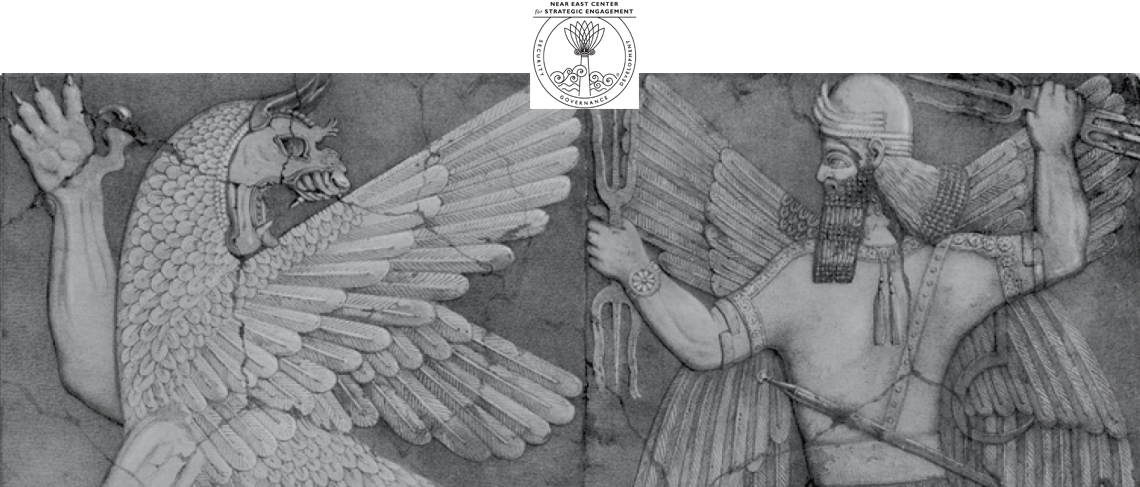On 6 NOV 1975 Assyrian Church of the East Patriarch Mar Eshai Shimun was assassinated at his doorstep in San Jose, California. His assassin was David Malik Ismail, a triggerman doing the bidding of various players-including Church dissidents-coopted by the Iraqi Baath Party, which wished to see His Holiness murdered and out of the picture. This was done in order to prevent Assyrian aspirations in the Near East from progressing. In fact, His Holiness was exiled from Iraq in 1933 because of the Iraqi Government’s fears of the creation of an Assyrian state, the former act one that the British could have opposed, given their leverage over the region, but chose not to. Implicated in the assassination plot was also the Assyrian Universal Alliance (AUA)-the only non-Church, major political representation the Assyrians had at the time. This link was through David Malik Ismail’s brother, Zaia Malik Ismail, who was a member of the AUA. Nevertheless, during His Holiness’ years as Patriarch, he preached several times for the Assyrian people to be faithful, loyal citizens of the countries in which they lived. He preached a message of peace all the while still presenting the case of the Assyrians to the United Nations and speaking of their plight. His killer never faced prison time or punishment, and now resides in Canada.
Prior to his death, it was rumored that he was asked to take a more active role in politics while still Patriarch. He stated that it was not the role of the Church to be involved in politics. Therefore, some had suspected that when he officially stepped down, he would be active in politics. One of the rumored assumptions was that he would fight to create an Assyrian state from within Iraq. Seeing the potential disaster that could lead to, he was determined to see the Assyrian people go about fighting for their right in a different and more systematic way, rather than choosing the proverbial “low-hanging fruit” that could very well lead to another slaughter like 1933’s Simele Massacre. This move, along with his call for peaceful citizenship of Assyrians in the countries in which they lived, may have not been viewed very well by certain elements within the Assyrian nation. Combined with efforts by some dissidents who wished to have their own pick as leader-and an Iraqi Baath administration that would do anything to thwart the eventual emergence of an Assyria-and the elements were in place for this wicked betrayal of one of the Assyrian nation’s most ardent and charismatic leaders.
Forty years since His Holiness Mar Eshai Shimun’s assassination, it remains to be seen whether the UN or the world will hear his case about the Assyrians. However, his call to the Assyrian people to act as loyal citizens of the countries in which they lived was heard and honored. Today, NEC-SE honors his over 50 years of service to his Church and Assyrian nation, including fighting for his people’s rights. Mar Shimun was tenacious and well educated, having studied theology at Canterbury and at Westcott House, University of Cambridge. He was the son of Rab-Khayla (General) David Shimun. General David was brother of Mar Benyamin Shimun, the previous Patriarch who was also martyred in 1918. Mar Eshai Shimun loved his people and lost his life because of it. Moreover, his approach of peace and a more strategic pursuance of national aspirations-rather than violence-was more in line with the message of Christ. For this and other reasons, Mar Eshai Shimun was martyred. However, his legacy lives on as the Assyrian people continue to live peacefully yet work strategically toward the establishment of Assyrian self-governance. A fine line to walk between assertion of rights and peace, this model will serve as an example both regionally and globally, and is a burden that the Assyrian people have been called to carry.
1975: From The Public Records of The Trial Proceedings of The Assassination of His Holiness, Mar Eshai Shimun XXIII:
http://www.atour.com/history/1900/20000717b.html
Related Links:
http://nec-se.webbar312.net/2015/11/05/why-middle-east-peacemakers-do-not-live-in-peace/
Categories: Governance


